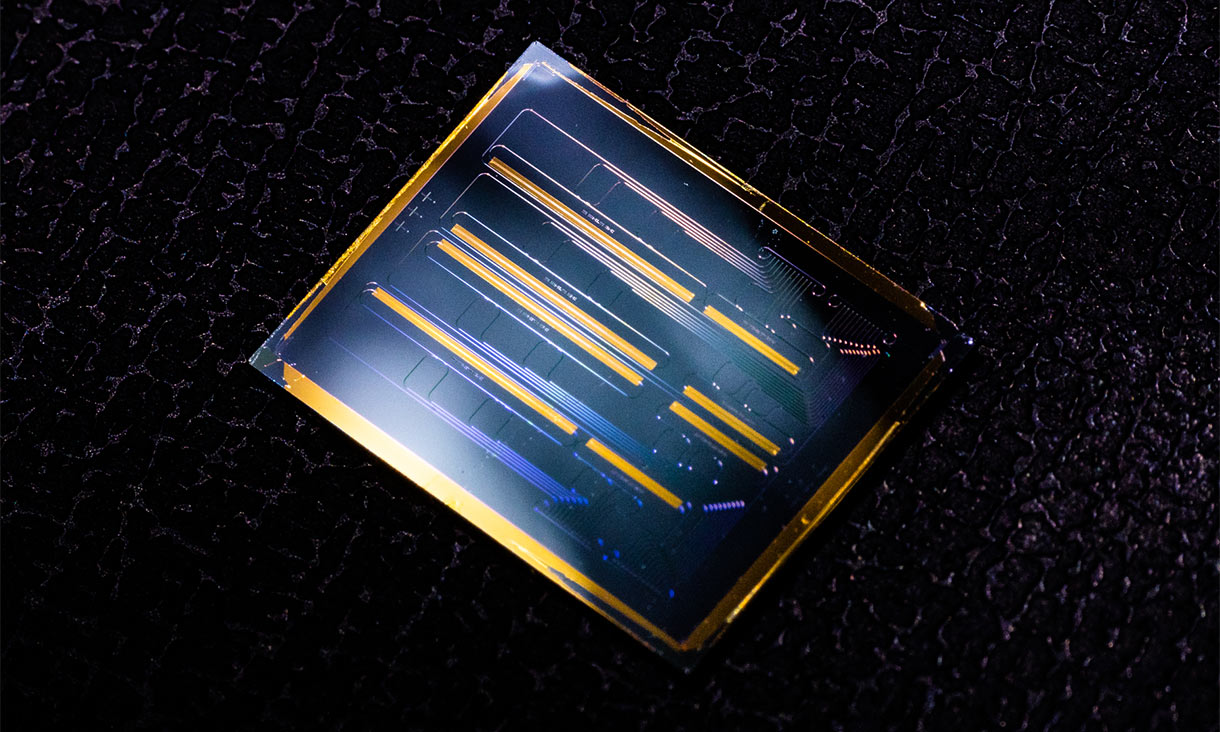
As our smart devices become more complex yet demand to be smaller by consumers, we need to look for other ways to use materials that could pack information into less.
Currently, the light-powered fingernail-sized chips underpinning our smart devices only operate in two dimensions, as they are arranged on a flat surface along which light particles are routed.
However, theoretical models of higher dimensions – beyond the space and time which we experience as humans – are abundant and offer alternative ways to go from point A to point B. As the number of dimensions increases, greater variety and potential efficiency becomes unlocked.
However, realising these higher dimensions on a chip requires new ways to control light particles.
To increase the amount of information processed on-chip, we can treat changes in internal properties of a particle of light, such as frequency, as a type of movement akin to that along the surface of the chip. This is termed a ‘synthetic’ dimension – to be used as a testbed to gain insight into complex physical models, while providing intriguing device functionalities.
In a project led by Research Fellow at our Integrated Photonics and Applications Centre (InPAC), we investigated how to create an on-chip synthetic dimension by employing the frequency of photons as if it were another dimension that exists in addition to space.
 The microchips often found in our phones (like the chip pictured) exist on a flat surface, so we only have two dimensions to play with from the outset.
The microchips often found in our phones (like the chip pictured) exist on a flat surface, so we only have two dimensions to play with from the outset.
By experimenting with variables that are outside the 2D physical space – like the frequency of light waves in small ring devices – the team was able to establish an extra coordinate that emulated particles hopping along a lattice using a robust integrated chip-based platform.
Modelling beyond 3D with these synthetic dimensions can be used to investigate light’s behaviour in different contexts. These dimensions also increase ‘parallelism’ of photonic information, making processing more efficient.
The team strives to create more elaborate and complex lattice model arrangements achieve even smaller, robust, and powerful fingernail-sized chips to make our smart devices even smarter.
By tapping into these higher dimensions, we may see potential benefits in our smart phones and laptops, including:
Read more about our Simulation and Design team.


RMIT University acknowledges the people of the Woi wurrung and Boon wurrung language groups of the eastern Kulin Nation on whose unceded lands we conduct the business of the University. RMIT University respectfully acknowledges their Ancestors and Elders, past and present. RMIT also acknowledges the Traditional Custodians and their Ancestors of the lands and waters across Australia where we conduct our business - Artwork 'Sentient' by Hollie Johnson, Gunaikurnai and Monero Ngarigo.
Learn more about our commitment to Indigenous cultures